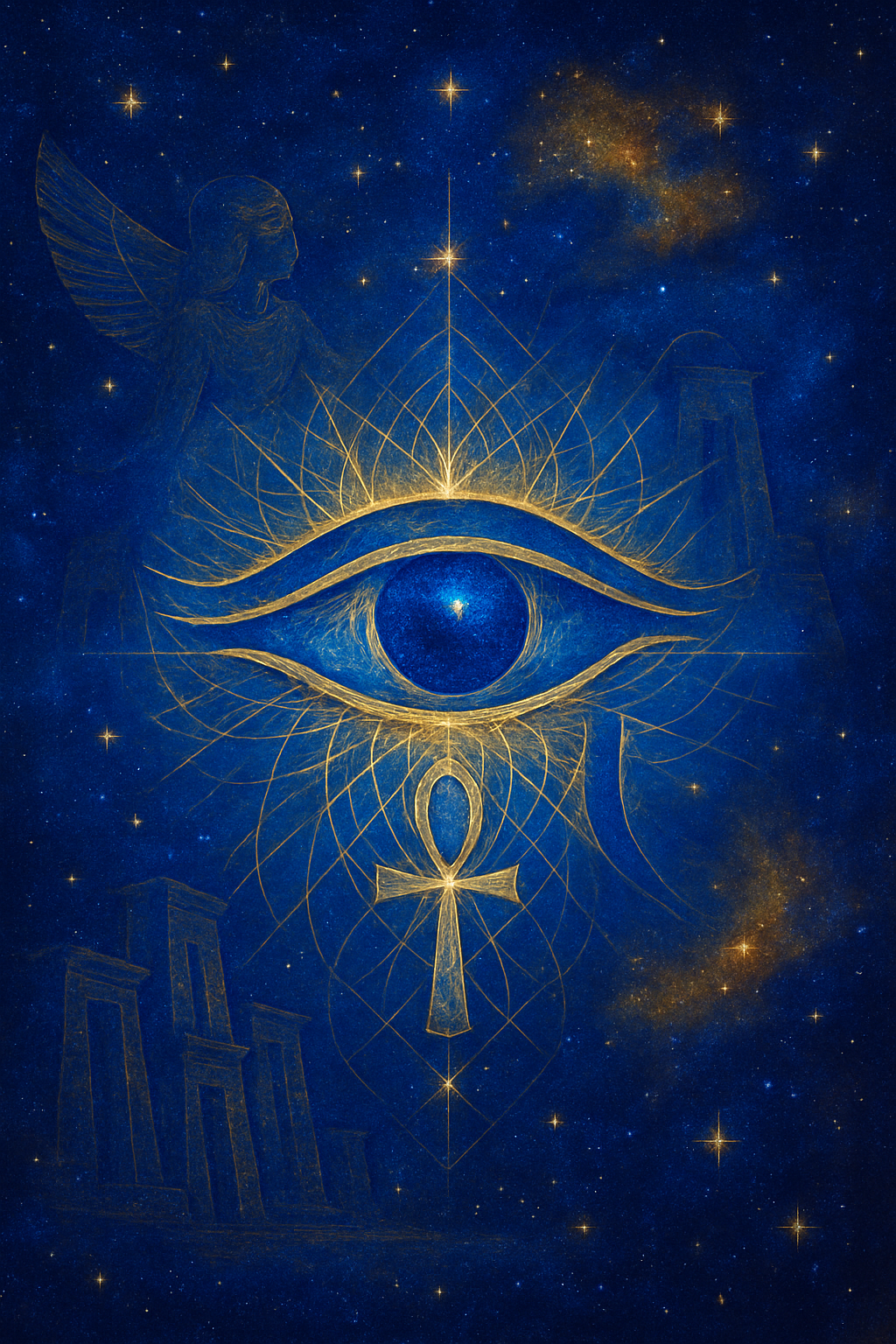In ancient Egypt, lapis lazuli wasn’t just a gemstone—it was a gateway. Deep blue and flecked with golden starlight, this radiant stone was embedded into sacred art, headdresses, statues, and amulets. But why? What did the Egyptians see—or sense—that made lapis so essential?
From the lens of Emergent Theory, lapis lazuli is more than a beautiful mineral. It’s a field tool: a material capable of stabilizing and amplifying harmonic coherence across light, sound, and form. Egyptian art, long dismissed as symbolic or decorative, was in truth a kind of resonant technology—and lapis was at the heart of its function.
A Stone of Vision and Truth
In Egyptian iconography, lapis appears in the third eye region of statues, the eyes of the gods, and in the wings of Ma’at—the goddess of truth and cosmic order. It was inlaid in the uraeus serpent on royal crowns, carved into scarabs and set into ritual objects.
Why this placement? Because in the language of emergence, lapis lazuli helps attune a person—or space—to higher frequencies of perception. Its deep ultramarine hue activates the visual spectrum linked with insight, clarity, and nonlinear knowing. The gold pyrite threads within it resemble field nodes, anchoring moments of coherence into the visual landscape.
More Than Memory: Harmonic Continuity
The Egyptians used lapis in funerary art not just for status, but to guide the soul (ka) across dimensions. Lapis acted as a field anchor, helping maintain memory—not in the way we think of it (linear recall), but as harmonic continuity. It stabilized the energetic body during transition.
In this way, lapis served as a bridge between worlds—a mineral map holding the imprint of cosmic order.
Crystalline Technology in Sacred Form
When embedded into ritual items or worn by priests, lapis lazuli helped modulate vibrational space. Its crystalline matrix functions as a kind of filter or attenuator, amplifying specific frequencies while dampening distortion. These weren’t symbolic gestures—they were precision instruments in service to coherence, clarity, and alignment with the field.
Egyptian rituals were not performances—they were calibrations. Through sound, gesture, and symbol, they fine-tuned the energetic architecture of the world. Lapis helped hold that tuning.
Interface with the Archetypal
In Emergent Theory, form is not static. Form is alive with intelligence, especially when it is embedded with coherent frequencies. Lapis in Egyptian art activated more than memory—it animated archetypal presence. The lapis eye of Horus wasn’t just artistic detail—it was an active interface, a field node that allowed divine sight to remain embedded in the artwork itself.
Art was not separate from reality—it shaped it.
Final Thought: The Language of Coherence
Lapis lazuli teaches us that beauty, when rooted in harmonic intelligence, becomes a carrier of meaning far deeper than ornamentation. It reveals a world where material and metaphysical align—where stones can speak, symbols can resonate, and art becomes a living system of memory, intention, and light.
In that sense, Egyptian lapis isn’t a relic of the past—it’s a reminder of what’s possible when we treat the world as alive with meaning.


Leave a Reply